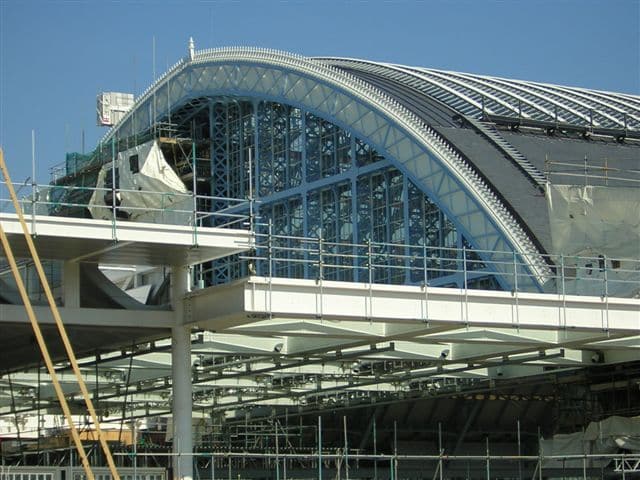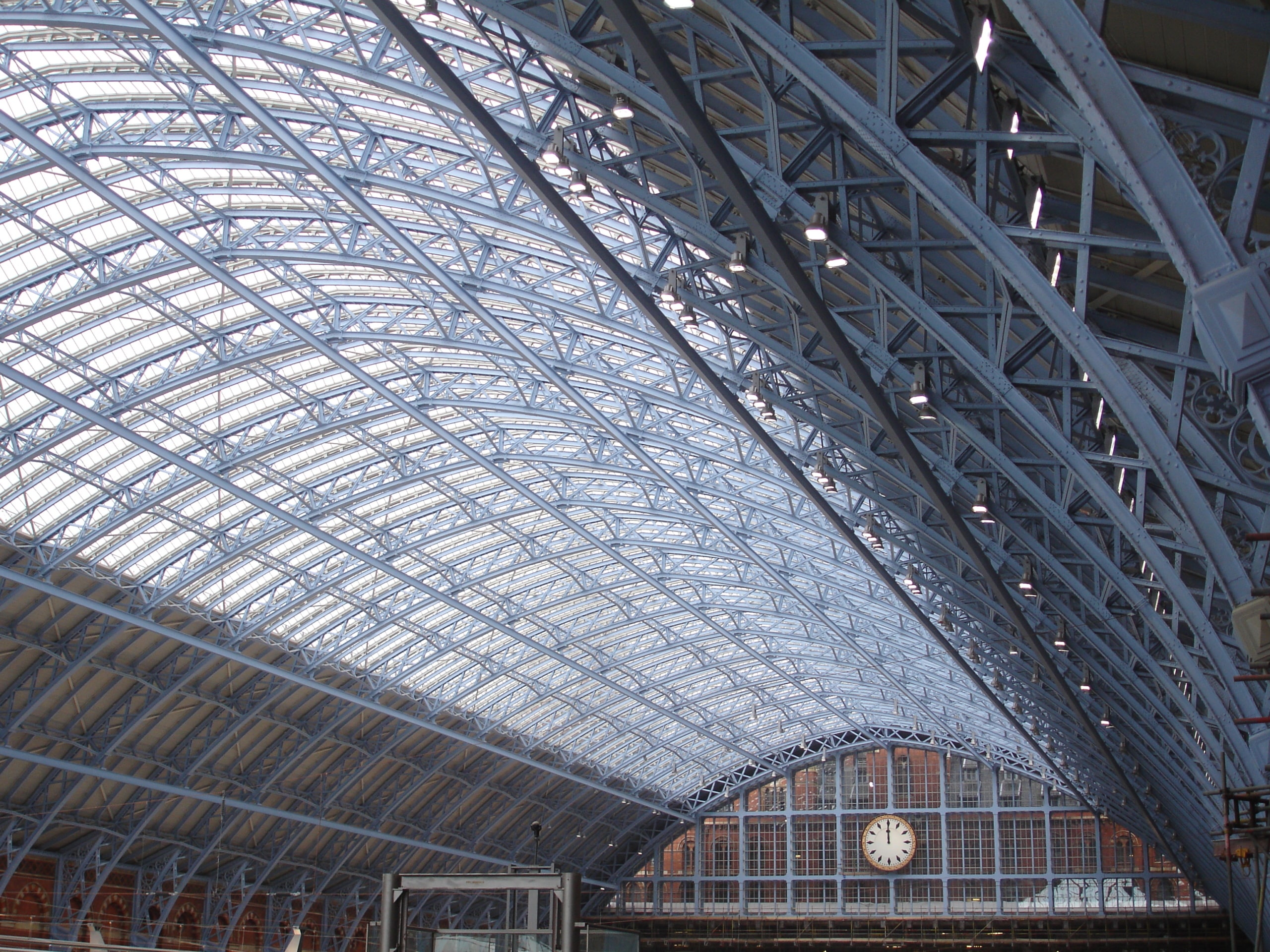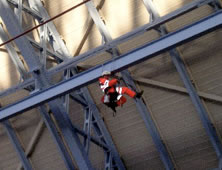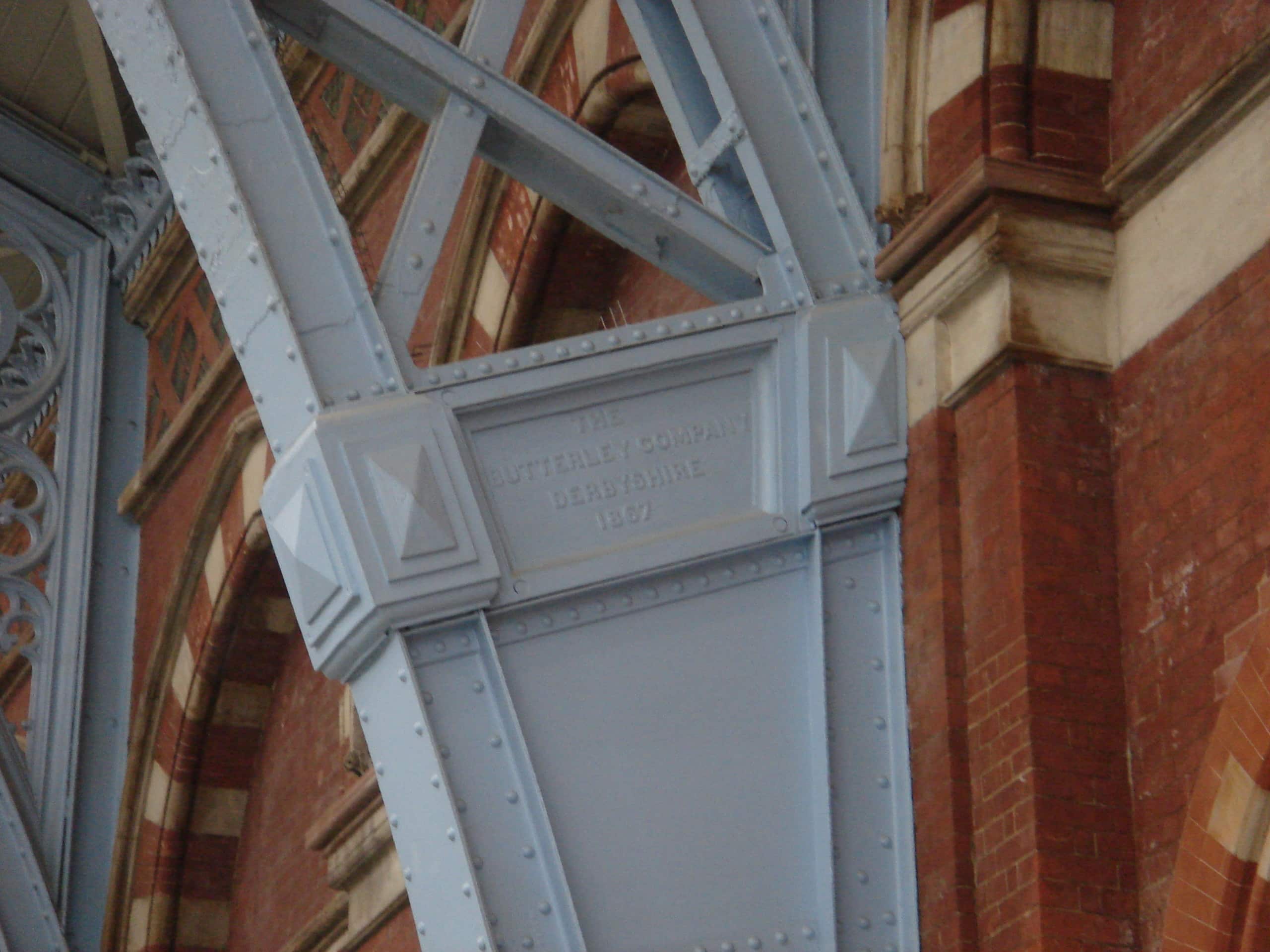Case Study: St Pancras International Station Refurbishment
The client
St Pancras isn’t just a major international train station—it’s an architectural masterpiece and a symbol of Victorian innovation. Completed in 1864, this Grade I listed building boasts the world’s largest single-span roof of its kind, a striking feat of engineering for its time.
Designed by William Henry Barlow, the train shed’s impressive span and ornate Gothic façade make it not only a vital transport hub but also one of London’s most iconic and historically significant landmarks.
The problem – protecting Victorian ironwork
Along with the refurbishment that accompanied the station’s transformation into a cross-channel rail link, the entire span of the Victorian ironwork needed to be protected – not just for the station’s use, but to preserve it for future generations.
So they came to Sui Generis to provide the long-lasting protection the ironwork needed while giving it a great-looking finish travellers.
The solution – a specialist coating system
The ironwork needed to stay safe and corrosion-free for decades to come – so we recommended a specialist coating system, which will leave a lasting impression and have a longer life span than most other coating systems – more than 20 years, in fact.
Because the work involved the removal of old lead paint, we implemented the most stringent decontamination procedures – to protect the workers on site and ensure the ironwork was prepared ready for coating application.
An industrial coating in tough conditions
The height and span of the girders, the sixty other contractors on site and the often confined space in which the work had to be done meant that we had to use all our experience and expertise to get it right.
Since the refurbishment has been completed, the new St Pancras International has been a great success, and thanks to our specialist coating system, we’ve had the added bonus of being able to inspire a little envy in the French.

Having stood empty for over twenty years we were entrusted with restoring this glorious structure back to its former glory. Undeterred by complicated high access issues and lead paint removal we embarked on a project that would be the focal point of the stations refurbishment project.

One of the first hurdles we had to overcome was to ensure lead dust would not be released into the atmosphere during the removal of the old lead paint. UHP Water jetting was identified as the safe solution and water at a pressure of nearly 40,000psi was used to remove the paint.

With the Iron work now prepared to ensure optimum application, the specialist coating was carefully applied to match the shade of blue originally used when the shed roof was first completed in 1868.

Some 20 000 man days and 50 000 litres of paint later the Barlow shed roof was once again ready to astound visitors from far and wide. Indeed the statue of the famous Sir John Betjeman, who was instrumental in saving the station, mirrors the response of virtually every visitor to the station as he looks up in awe at the striking blue finish.
